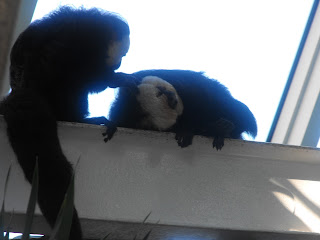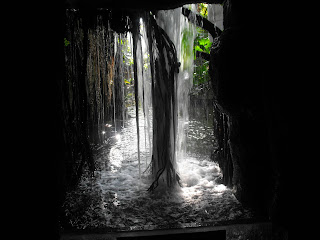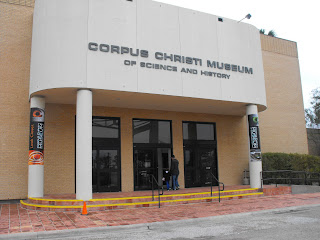 |
| Sign posted in the entrance. |
Have you ever wondered what it would be like to walk through
a tropical rain forest? Well, we got the chance while in Galveston. There is a
resort called the Moody Gardens that has 3 pyramids on the premises, one of
which houses an incredible rain forest. After paying your admission, as you
walk down the hallway to enter the forest, you are surrounded by the sounds of
frogs, insects, monkeys and other creatures. Turn the final corner and you step
onto a platform that drips and drops with the sound of rain falling on the
leaves and forest floor. Your next steps take you a wall of hanging “vines”
(ropes) and into another world.
 |
| Bearded Barbet |
The first thing you notice is the heat and humidity. It is,
after all, a tropical rain forest. Our
cameras immediately fogged up, which was a problem because there was a
beautiful bird on a limb just in front of us that we were trying to photograph.
 |
| Scarlet Ibis |
Eventually the cameras un-fogged but our sweat glands
continued to work overtime.
 |
| Blue Bellied Roller (pic stolen from internet as I was never quick enough to get them in flight). |
 |
| Guira Cuckoo showing off. |
The birds are the major attraction in the rain forest and
there are some pretty spectacular specimens. We were up close and personal to
all but one who had, apparently, become too “human friendly” and was caged for
his own good.
 |
| Crocodile Monitor |
There are plenty of reptiles on exhibit as well but, happily
for me, most were in glass cages. The Crocodile Monitor was on display in the
forest itself but he was behind wire.
 |
| Colorful Macaws |
 |
| Blue Macaws |
Several beautiful Macaws perch on limbs planted in the
middle of a pond and seem to be quite happy just preening and watching the
people walk by.
 |
| A stack of turtles! |
The pond itself is stocked with fish, 3 different types of
Sting Rays and a couple varieties of Turtle.
Circling around the pool and inside a viewing area with
glassed in critters, one has the pleasure of walking behind a waterfall.
One special area is the home to a number of different
butterfly species but there were few out. I suspect it is because it is winter.
We saw a couple munching on fruit plates but the best picture I was able to get
was of a Monarch on the ground outside that was clearly too cold to fly!
 |
| Egyptian Fruit Bat in his favorite position. |
Other inhabitants of the rain forest were Fruit Bats,
 |
| Cotton Top0 Tamarin |
a
Chinese Alligator and an Ocelot we were never able to locate in their enclosures, a few Monkeys
and a tiny antelope called a Blue Duiker (though I don’t know why they named it
that as it was quite brown in color).
Everywhere were huge tropical plants and beautiful orchids.
It was a wonderful way to spend a chilly afternoon.























